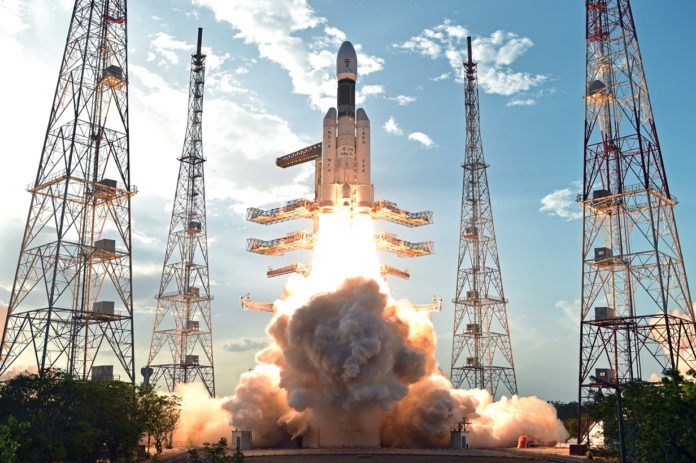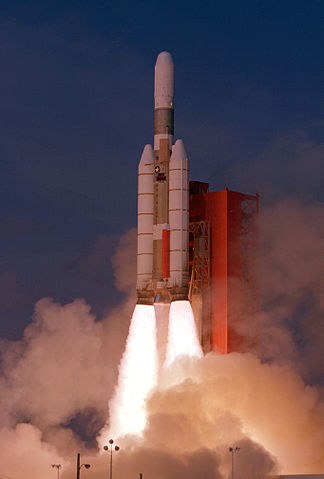On June 5th, 2017, The Indian Space Research Organization (ISRO) successfully launched a payload on their most powerful rocket booster ever, the Geosynchronous Satellite Launch Vehicle MK3. As the name suggessts, this is a booster designed to launch satellites into Geosynchronous orbits (orbit’s that stay in position over a particular spot of the planet) or, alternately, the first crewed Indian spacecraft.
The vehicle is 43 Meters tall, is 4 meters in diameter in the core stage, with 2 additional solid boosters on the side. Interestingly, this vehicle is very similar in appearance to Ariane 5 or, if you go back into rocket history, my favorite rocket series, the Titan 3 and Titan 4 boosters of the United States Air Force. The Similarities don’t end there though, the very way the booster flies is the same!

The Launch of the GSLV MK3. Note the Similarities to the below Titan IIIC
At launch, the rocket flies via just the 2 solid boosters, identical to how the Titan 3 and Titan 4 did. About 2 minutes into flight, the boosters begin to burn out, and the core stage ignites, just like the Titans. The booster separate and the vehicle continues to fly just on the core stage – later, the upper stage ignites and finishes the boost phase, again just like the Titans!

Titan IIIC, the now-retired booster that the GSLV MK3 is very similar to.
Don’t read this the wrong way: I think it’s absolutely awesome! I love the idea of the Titan flight profile that, while complex, was certainly something else in that it flew it’s first 2 minutes with just the boosters – the core, and all that fuel, being hauled up to ignite at altitude! There is just something awesome about it.
The vehicle can put about 4,000 Kilograms into geosynchronous orbit, so while it is a larger booster than the Titan 3, it’s payload capacity is rated lower, but I do think the vehicles do their orbital insertion differently and as such the GSLV MK3 is comparable, if not actually more powerful in some ways, at least compared to the Titan IIIC – Later Titans had vast payload capacity improvements.
It’s really just awesome to think they re-created the Titan III.
In any case, here’s launch footage:
https://www.youtube.com/watch?v=FgcRbrgMd0k
And in this awesome footage we get a great view of the booster separation and some nuances of core ignition about 10 seconds before booster separation. It starts rather shoddy, but trust me, it gets good at the tail end!
https://en.wikipedia.org/wiki/Geosynchronous_Satellite_Launch_Vehicle_Mark_III
